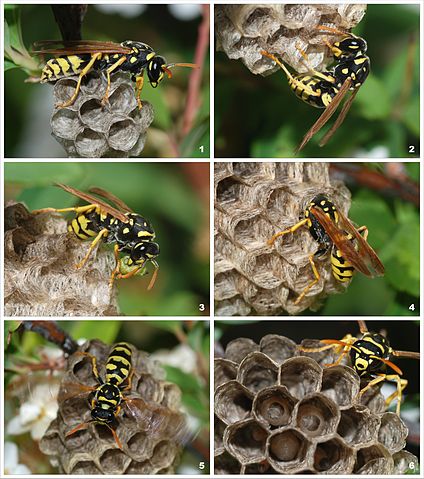Bosanski: Mlada matica osa Polistes dominula pronalazi novu koloniju.
Česky: Mladá královna vosíka skvrnitého ( Polistes dominula) zakládá novou kolonii
Dansk: En ung dronning af hvepsearten Polistes dominula grundlægger en ny koloni.
Deutsch: Eine junge gallische Feldwespen königin ( Polistes dominula) gründet einen neuen Staat
English: A young paper wasp queen ( polistes dominula) is founding a new colony.
Español: Una avispa cartonera ( Polistes dominula).
Suomi: Nuori Polistes dominula-paperiampiaiskuningatar perustamassa uutta yhdyskuntaa
Français : Une jeune reine de l'espèce de guêpes sociales Polistes dominulus en train de fonder une nouvelle colonie.
Magyar: Új kolóniát alapító fiatal déli papírdarázs (Polistes dominula) királynő
Italiano: Una giovane vespa regina ( Polistes dominula) fonda una nuova colonia.
日本語: 新しいコロニーを建設中の若い アシナガバチの 女王。
Македонски: Млада матица оса-хартијарка (Polistes dominula) основа нова колонија.
Nederlands: een jonge Franse veldwespen koningin (Polistes dominulus) bezig met de bouw van een nieuwe kolonie
Polski: Młoda królowa osy z gatunku Polistes dominula szuka nowej koloni.
Português: Uma jovem rainha da família das vespas sociais ( Polistes dominulus), fundando uma nova colmeia.
Română: O matcă de viespe din specia Polistes dominula înfiinţând o nouă colonie.
Русский: Молодая матка осы бумажной ( Polistes dominulus) основывает новую колонию
中文(简体): 一只年轻的造纸胡蜂( Polistes dominulus)在筑巢
中文(繁體): 一隻年幼的 造紙胡蜂蜂后( Polistes dominulus)在築巢




